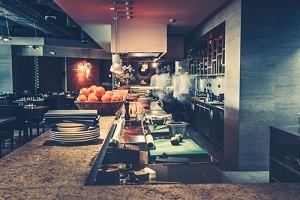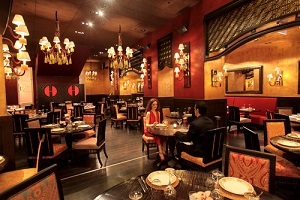 Anybody in the restaurant business will tell you that running an eatery is a daunting task. It is fraught with challenges, mishaps, and disasters. It may seem costly to devise an effective financial backup for a rainy day, but it’s a smart business move.
Anybody in the restaurant business will tell you that running an eatery is a daunting task. It is fraught with challenges, mishaps, and disasters. It may seem costly to devise an effective financial backup for a rainy day, but it’s a smart business move.
Regardless of your efforts to ensure a safe, healthy, and secure eatery by minimizing risks, you will still be vulnerable to unforeseen accidents. Getting restaurant insurance is the ultimate Plan B if things go south.
The only drawback that typically prevents business owners from getting adequate insurance coverage is the cost. But we’re sure that with some guidance and information, you will realize it is affordable and can save you from paying for unforeseen damages.
Pricing Options for Restaurant Insurance
There are different mishaps and disasters for which you can insure your business. Each entails distinct details and prices. Here’s a table outlining the median costs of each to give you an idea of what to expect:
|
Insurance Policy |
Description |
Annual Cost |
|
General Liability Insurance |
Provides coverage if a customer suffers from an accident in your restaurant. This insurance covers injury from slips and falls or burns from hot beverages and food. |
$805 |
|
Liquor Liability Insurance |
Offers financial protection if a customer drinks alcohol on your business’s premises and is involved in an incident (such as a car accident) afterward due to their inebriated state. | $545 |
|
Commercial Auto Insurance |
Vehicles delivering food to customers or raw materials to your restaurant from distributors are covered for accidents or theft. The coverage is only valid if/when a mishap occurs while the vehicles are used for business. |
$2,208 |
| Business Interruption Insurance | This coverage may be the most critical insurance policy in the wake of the pandemic. It reimburses lost income. Any unforeseen interruptions to your business operations due to natural disasters or other calamities are covered – natural or otherwise. |
$1,000 |
|
Workers’ Compensation Insurance |
Most states legally require you to have this policy. If an employee is injured or falls sick, workers’ compensation insurance will cover any medical expenses and lost wages. | $1,480 |
| Equipment Breakdown Insurance | It covers your business for any lost income because of malfunctioning equipment, such as deep freezers or fryers. It can also pay for repairs or the replacement of broken equipment. |
$30 |
|
Commercial Property Insurance |
It pays for replacing or repairing your furniture, equipment, and inventory if your business premises are damaged due to artificial or natural disasters. This policy could cover dangers such as floods, fires, and even terrorist attacks. |
$755 |
Getting all these individual insurance policies equals a staggering $6,823 per year, which is too expensive for most restaurateurs. Luckily, there’s an alternative: Restaurant Insurance Packages.
What Do I Need to Know About Restaurant Insurance Packages?
 It makes better financial sense to get an insurance package or business owners’ policy (BOP) for your eatery instead of getting individual insurance coverage for all potential threats to your business. BOP lumps different insurance policies covering niches into one complete, cost-effective package. Restaurateurs get more coverage, but the price may vary depending on the business’ underwriting results.
It makes better financial sense to get an insurance package or business owners’ policy (BOP) for your eatery instead of getting individual insurance coverage for all potential threats to your business. BOP lumps different insurance policies covering niches into one complete, cost-effective package. Restaurateurs get more coverage, but the price may vary depending on the business’ underwriting results.
Your underwriting result is the difference between the premiums collected by the insurer and the claims and expenses paid out. Large claims and disproportionate expenses can result in a more pricey BOP and vice versa. Nevertheless, it is still more affordable than getting each policy separately: on average, a BOP can cost as little as $1,150 per year.
Other factors that determine the insurance package’s cost are:
- Years in business – The longer you’ve been in business, the more data insurance agencies will have about your underwriting results and operating costs.
- Number of customers served – Knowing how many people ate at your restaurant validates present and future revenue streams and the probability of liability claims.
- Number of employees – This information helps calculate your operational costs and workers’ compensation Who Needs Workers Compensation Insurance? The fewer employees you have on staff, the better these indicators.
- Building’s architecture and age – If your restaurant is a wood-frame building, it might be more susceptible to damage in a fire or natural disaster – increasing the likelihood of massive claims. Conversely, masonry is a comparatively stronger material. Plus, the older the building, the more vulnerable it is.
- Fire and security system – Insurers check if you actively safeguard your dining establishment against fire, theft, and other hazards. Reliable fire and security alarms can substantially reduce insurance costs.
- Value of assets – Insurance companies estimate the value of your insured possessions and contents. Expensive equipment, furnishings, fixtures, and inventories increase insurance costs. Indeed, the more exclusive an eatery, the costlier its insurance will be.
You can use the information mentioned above to acquire a Restaurant Insurance package that fits your needs. A simple tip is installing fire and security alarms to reduce costs by alleviating insurers’ concerns about your establishment’s protection against fires and break-ins.
Get Reliable Restaurant Insurance From JMG Insurance Corp
Now that you know how much Restaurant Insurance costs, make the right move and get it. You deserve to work with an insurance agency that cares about its clients. Working with professionals gives you the best coverage against all sorts of threats to your business.
So if you want the best, look no further than JMG Insurance Corp. Contact us for further details.




